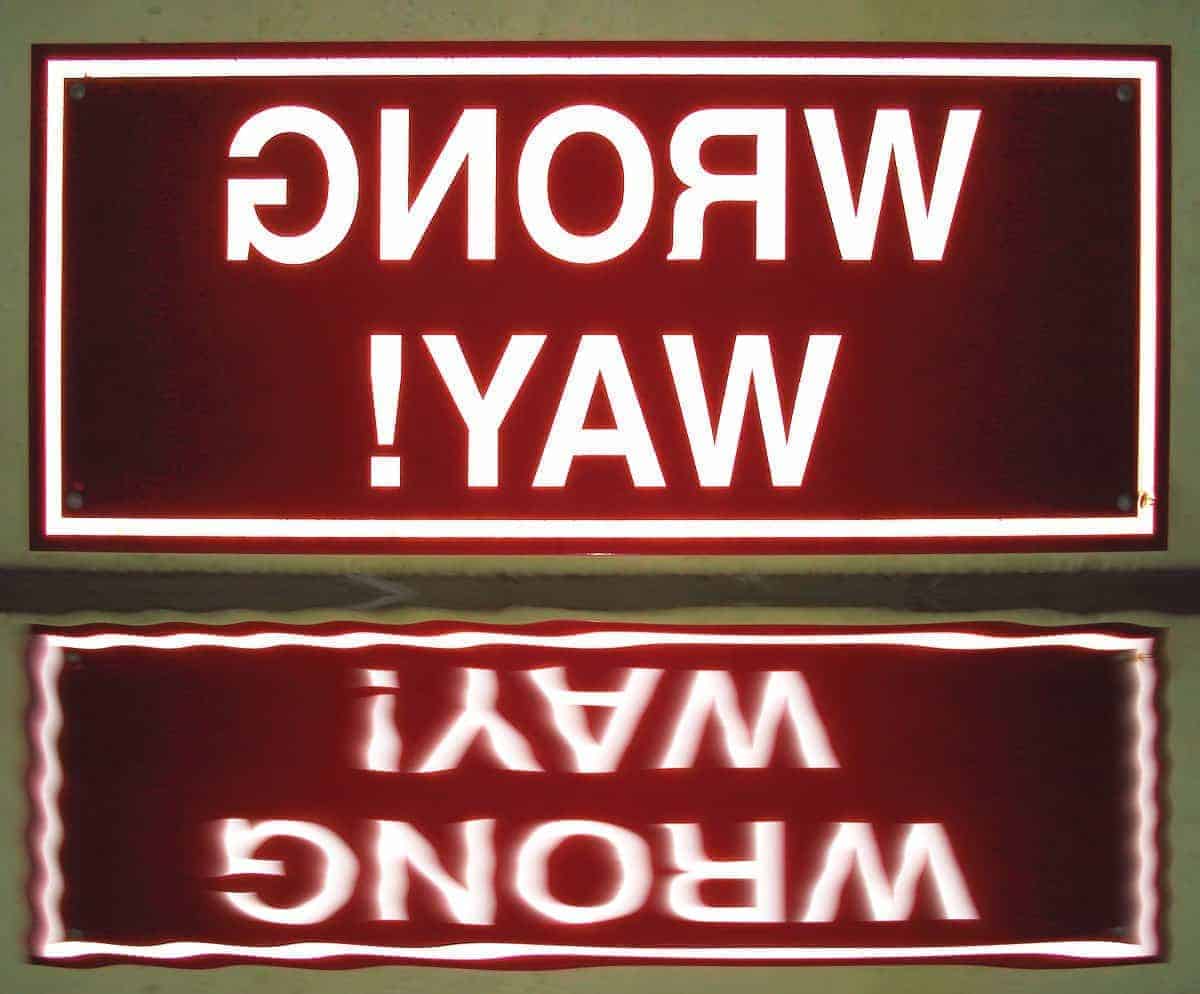Even those organizations that are well managed and attuned to the importance of procurement are finding significant opportunities to improve.
Leon Shivamber

Common Missteps
PROCUREMENT CONTINUES TO BE A VERY FRUITFUL SOURCE FOR COST REDUCTION YET MANY PROCUREMENT ORGANIZATIONS FAIL TO ACHIEVE THEIR POTENTIAL BY MAKING ONE OR MORE OF FIVE COMMON MISSTEPS.
Excerpt from Introduction to Improving Procurement
CEOs are becoming increasingly aware of the value a great procurement function can bring to their business. And report after report of massive cost reductions or improvements in quality and service, as well as faster time to market indicates that such interest is well warranted.
Great procurement organizations work collaboratively with other functions and with their suppliers to drive broad improvements in total costs.
However, in order to be most effective these organizations are ensuring they have the best talent arrayed against each strategic segment of procurement expenditures, even if they have to outsource some portion of their function.
The leading organizations also recognize that information is more important than organizational structure, thus their technology investments are focused and frequently deliver value upon implementation, unlike many other misguided procurement automation efforts. Finally, these groups recognize that they are unable to build a competitive business without competitive suppliers, and make every effort to ensure relationships are such that the total system wide cost are being reduced collaboratively, for in so doing, these partnerships can deliver the greatest improvements in procurement.
Go here to read the first part of this series: Introduction to Improving Procurement
Common missteps
Even those organizations that are well managed and attuned to the importance of procurement are finding significant opportunities to improve.
Even those organizations that are well managed and attuned to the importance of procurement are finding significant opportunities to improve. Please Click To TweetWhy is this? Many procurement organizations fail to achieve their potential by making one or more of five common missteps:
- Focus on purchase price rather than total costs.
- Reliance on simplistic Pareto rather than operational segmentation, and focus on reducing purchasing costs by automating procurement.
- Emphasize negotiations and supplier leverage rather than broader cross-functional opportunities.
- Emphasize structural changes (centralize versus decentralize) rather than develop process capability.
- Under-invest in procurement organization, and then involve purchasing in everything.

Misstep 1: Focus on purchase price
The concept of an economic order quantity (EOQ), which balances the costs of transactions and inventory, has been around a long time. And many purchasing organizations are aware of its utility, and buyers have been trained in its application.
Unfortunately, today it is infrequently applied. And when it is, the simplifying assumptions applied only serve to minimize its potential benefits.
With the introduction of the EOQ came the universal recognition that purchase price was only one of many variables and real costs that should be factored into every purchasing decision. The EOQ teaches purchasing organizations that if you purchase less frequently (larger quantities), you might experience price breaks that needed to be balanced against higher inventory costs (the larger quantities would last longer).
As a consequence, procurement functions innovated and devised the annual purchase contract that creates a base price for the quantity purchased over the year. At one level, they had minimized one of the significant tradeoffs built into EOQ’s and thus they could ignore its application.
The next step was to drive towards lower inventory (low purchase price and lower inventory at the same time), by having products shipped in more frequently. In this process, the other transactional costs were lost or ignored.
One distributor wanting to reduce its inventory, given that prices did not fluctuate with purchased quantity, decide to shift from monthly deliveries to weekly. Its warehouse costs skyrocketed, far outstripping the savings from inventory.
Today, its common place for customers to require suppliers to replenish product far more frequently that the transactional-cost-increase to inventory-cost-reduction tradeoff would suggest.
All purchases cost far more than the price paid on the invoice. Please Click To TweetThe reality is that all purchases cost far more than the price paid on the invoice. For example, each time something is purchased, someone in the organization may be required to: request a purchase, find a supplier, place an order, receive the order, deliver the item to the requestor, and receive, record, and pay an invoice. And all that assumes that you receive what was originally requested, and that it does not need to be inspected, and there are no service issues.
In many organizations, these costs are not trivial, yet they are ignored in the procurement equation.
Misstep 2: Simplistic Pareto and misguided automation
Technological progress has merely provided us with more efficient means for going backwards
Aldous Huxley
General Electric managers developed the ABC classification methodology (the most common Pareto) during the 1950s to help focus its efforts on the small percentage of items that account for a large percentage of its sales.
This methodology was then translated and applied to inventory management and procurement rapidly, as its utility was clear. By focusing on the small number of items that accounted for the largest proportion of its purchases, the procurement function could ensure the largest benefits were achieved.
Professional purchasing organizations were built and focused on those A and B items that were “strategic” and C items were left to the users. Plant maintenance bought their own supplies, administrators bought office supplies, and a whole array of “non-strategic” purchases was left out of the domain of the procurement function.
Consequently, today large portions of purchases are still being made with less rigor and control outside of the procurement function.
Let’s face it, most procurement organizations spend a lot of time managing and ensuring that their A and B items are priced right. But what about those C items, or even the non-production purchases, that frequently bypass the procurement function?
At one industrial company, a quick review of C items indicated prices 50 to 75% higher than market. A 25% reduction of prices on the C items (30% of total purchases) would lead to more savings than the price reductions targeted in the remainder of the procurement pool (the other 70%).
In some cases, companies have recognized this opportunity and strived to bring control to the process. At a minimum, the procurement function would have some oversight responsibility. But the transactions became overwhelming due to the large variety of items being procured. The simple answer for many has been process automation, and more recently eProcurement (an even more advanced form of process automation). Processes for requisition, approvals, orders, and payment were shifted online, reducing the organizational costs associated with transactional purchasing.

Unfortunately, many of these efforts have failed to deliver on their promises and are ill conceived to begin with.
Forrester Research in a recent report noted that many implementers have merely automated existing processes for approving requisitions, and in so doing have failed to achieve the real benefits.
Naturally, the real benefits of a highly automated procurement cycle don’t come by simply installing an application, but through real process redesign.
Gartner Group estimates it will take three years to bring 50 % of the white-collar MRO procurement spending under the control of eProcurement applications, and another three years to reach 80 % of spend.
That is not to say that automation or eProcurement are not useful. However, these are solutions that ought to be placed within a strategic framework and applied to those items where all costs can be reduced. Further, to maximize the value of these solutions, it is necessary to reshape processes that can minimize transactions and transaction costs without driving up prices.
Misstep 3: Focus on leveraging suppliers
A recent poll of purchasing managers identified pursuing volume leverage across business units or locations as the second-most popular current cost reduction strategy, right behind work activity and staff reductions.
In 1979, Xerox coined the phrase “competitive benchmarking” when it set about to find out why its Japanese competitors were able to sell copiers below Xerox’s manufacturing cost. This process unearthed that Xerox was rejecting 10 times as many products as its competitors and taking twice as long to bring products to market.
Thus was born the “Leadership through quality” program. At the heart of this program was the realization that with 9 times as many suppliers as the Japanese, Xerox would be unable to drive significant improvements without significant improvement.
Soon benchmarking, total quality and supplier reduction became the mantra of any effective management program.
One of the extraordinary side effects of the supplier reduction program was a significant reduction in cost as each supplier became that more important to the company, and the company to that supplier. Through co-dependency significant benefits were created for both parties.
One of the extraordinary side effects of a supplier reduction program is a significant reduction in cost as each supplier becomes that more important to the company, and the company to that supplier. Please Click To TweetTwo decades later the cause and effect has been forgotten.
Today, procurement organizations believe it is their right to receive lower prices if they buy more even if costs don’t change. Let’s face it; generations of managers have been taught that the way to get lower cost from suppliers is to be a big customer whereby you can dictate terms. Whole new forms of collaborative buying organizations have been created to drive just such a benefit. And some distribution industries have become more consolidated precisely so that the consolidators could become bigger and exercise more clout over their suppliers.
Between 1992 and 1993 José Ignacio Lopez de Arriortua headed GM’s purchasing in North America and is credited with saving GM approximately $4 billion in expenses.
Sadly, he is also credited with causing immense harm to GMs long-term supplier relationships and its competitiveness, an impact (believed to be greater than the savings) that has taken nearly a decade to undo. López focused his teams on price, requiring that each major item be bid at least ten times.
He would frequently tear up existing contracts and instruct suppliers to resubmit their winning contract bid with double-digit percentage reductions in price. And he noted to these suppliers that GM represented a major portion of the firm’s sales, and the firm would be long bankrupt by the time the supplier’s grievance found its way to a court hearing.

Across town, Chrysler management chose a different approach. They focused on long-term partnerships rather than short-term price concessions.
Chrysler introduced systems oriented procurement selecting suppliers on their ability to contribute to the entire product development and manufacturing value chain.
The results? Chrysler’s product development cycle time shrunk and they were able to launch a succession of hit cars, while GM’s efforts stalled in comparison. To make matters worse, Lopez left GM and took all his prices to Volkswagen, leaving the horrible supplier relationships behind. GM’s price reductions were short lived.
Think that the Lopez story is an isolated case? Today, the latest tool in the buyers arsenal aimed at suppliers is a “reverse auction”, a process pitting suppliers against each other in a bid to keep their previously earned business with the customer, just as Lopez did to his suppliers with at least ten bids. The difference? Web enablement makes it less personal and much faster.
General Electric, seeking to achieve some of the 10 to 30% cost reductions promised by reverse auctions in its electronics components found its best suppliers opting out of any involvement in the reverse auction they required. These suppliers would decimate their existing margins (10 to 20%) for GE to achieve anything close to the benefits it expected. And what about the services and tight integration being provided to GE’s factories? Was that not worth something? GE was forced to back off its requirement that electronics components suppliers be selected using a reverse auction.
Focusing on price ensures that the limited interaction between buyer and supplier will be adversarial, forget trying to figure out how to save costs or cooperate. Procurement strategists know that a focus on price or volume leverage is only a short run strategy leading to a vicious cycle of low price, followed by lower cooperation, reduced quality, reduced service and lower flexibility. Though a focus on price or volume leverage can produce short-term cost savings, experience says there are frequently far more fruitful approaches leading to deeper and more sustainable procurement cost savings.
Procurement strategists know that a focus on price or volume leverage is only a short run strategy leading to a vicious cycle of low price, followed by lower cooperation, reduced quality, reduced service and lower flexibility. Please Click To TweetMisstep 4: Change structure
The Center for Advanced Purchasing Studies (CAPS) conducted two studies of purchasing organizations in 1988 and 1995. A stunning 119 (41%) companies responding to both studies had changed their procurement organization structure in that seven-year period. The number shifting towards decentralization was only slightly larger than those shifting towards centralization.
In a follow up study of 15 specific change situations, researchers found that the changes were typically made to confirm to a major corporate change, but in all cases motivated by an attempt to cut costs.
So in every case, whether centralized or decentralized, when a company decides to change its corporate structure, it changed its procurement structure and found significant cost savings.
Why then is it that Gene Richter, former Chief Procurement Officer of IBM in an article for Purchasing Magazine is so confident that “Most procurement experts believe 15-20% of purchased materials and services can be saved (billions of dollars in a large company) by centralizing procurement and leveraging a far-flung corporation’s buying power.”
All too often, frustrated managers along with their consultants, recognizing the benefits of focusing on procurement and attempting to drive savings will choose organizational structure changes as the primary solution, only to unwind those changes years later. That is not to say that structure is not a valuable change lever, but getting procurement right is far more complicated than changing to a centralized or decentralized organization.
Getting procurement right is far more complicated than changing to a centralized or decentralized organization. Please Click To TweetAsk yourself, how effective would a centralized organization be if engineering decisions were being made locally? After all, the vast majority of procurement costs for production items are determined when the engineering decision to include or exclude a component or supplier is made. Or, how effective is the local or factory level group when global competitors are making the products being sourced?
Any company that decides to change its procurement structure merely to align with corporate structure changes fails to recognize the importance of other critical needs such as procurement strategy, systems, skills and shared values (or goals), and will underachieve its potential.
Misstep 5: Under-invest in organization
Procurement costs money. So much money to some companies that they are willing to invest heavily in systems to reduce the non-value-added work associated with procurement, reducing staffing at the same time of course. And of course, there are significant portions of every procurement organization that are being under-utilized or used in non-value-added activities.
The reality is that many companies squander the time of their procurement resources, a very valuable asset. A focus on systems and automation understates the importance of skills, focuses on the transactional aspects of procurement rather than the strategic, and under-leverages the relationships built between suppliers and the procurement organization.
A focus on systems and automation understates the importance of skills, focuses on the transactional aspects of procurement rather than the strategic, and under-leverages the relationships built between suppliers and the procurement… Please Click To Tweet
Where is the procurement organization in the pecking order? How much is being spent on acquiring new skills either through world-class talent or training?
The average procurement professional is a married male in his mid-40’s who has worked in purchasing for 15 years. And over those 15 years, training has been sparse. Less than one quarter of these professionals are certified purchasing managers (CPM).
The fact is that many companies will hire inexpensive and lower skilled procurement staffs preferring to have them learn on the job, and then expecting them to be world savvy. And despite all the money being spent on automation, routine paperwork still occupies a third of the procurement professional’s time.
Procurement, to be effective, must be good at strategic and executional issues, yet firms hire with the perspective that most procurement challenges are executional.
Face it; the skills, style, goals and activities associated with strategic procurement are far different from those of executional procurement. To hire into one and promote into the other is applying blind faith that executional experience teaches strategic thinking, analysis and negotiation skills.
The skills, style, goals and activities associated with strategic procurement are far different from those of executional procurement. Please Click To TweetOne large procurement organization with nearly $10B in purchases each year found fewer than ten percent of its procurement group knew how to calculate inventory turns, margins, and mark-ups, much less an economic order quantity (EOQ). The reality is that far too many companies entrust their valuable procurement to “years of experience” with “little training”.
The reality is that far too many companies entrust their valuable procurement to “years of experience” with “little training”. Please Click To TweetIf the supply market was not so dynamic, one could understand this strategy, but with improving procurement being such a vital element of a company’s competitiveness, you would be stunned by how much better a company can perform when it invests in high quality talent.
Part 3 – Improving Procurement – What To Do
Go here to get a PDF file containing all three part: Improving Procurement PDF